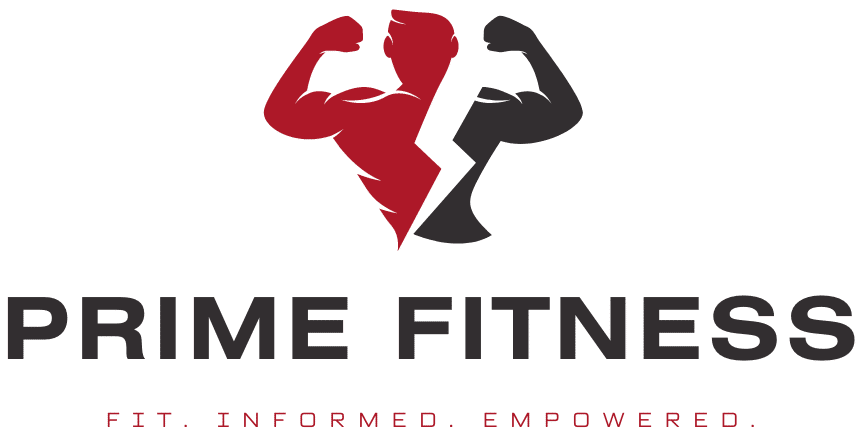In this article, we will explore the differences between cardio and strength training. You’ll learn about the specific benefits of each type of exercise and how they can impact your fitness goals. By understanding these differences, you can create a well-rounded fitness routine that suits your needs and helps you achieve optimal results. So let’s dive in and uncover the unique aspects of cardio and strength training!

Cardiovascular Training
Definition of Cardiovascular Training
Cardiovascular training, also known as cardio or aerobic exercise, is a form of physical activity that primarily focuses on improving the cardiovascular system, which includes the heart, blood vessels, and lungs. The main goal of cardiovascular training is to increase heart rate and breathing to stimulate the body’s oxygen consumption and promote overall cardiovascular fitness.
Benefits of Cardiovascular Training
Cardiovascular training offers numerous benefits to the body and mind. It improves heart function and strengthens the cardiovascular system, leading to better circulation and increased endurance. This type of exercise also helps in burning calories and losing weight, as it elevates the body’s metabolism and promotes fat burning.
In addition, cardiovascular training enhances lung capacity, allowing for more efficient oxygen intake. It can also reduce the risk of various health conditions, such as heart disease, high blood pressure, and type 2 diabetes. Furthermore, engaging in regular cardiovascular exercise may improve mood, reduce stress, and increase overall mental well-being.
Types of Cardiovascular Exercises
There are various types of cardiovascular exercises that you can incorporate into your fitness routine. These include:
-
Running: Running is a popular form of cardiovascular exercise that can be done both indoors on a treadmill or outdoors. It is a high-impact exercise that engages multiple muscle groups and increases heart rate.
-
Cycling: Cycling, whether on a stationary bike or outdoor bicycle, is a low-impact cardiovascular exercise that is gentle on the joints. It can be done at various intensities, making it suitable for people of different fitness levels.
-
Swimming: Swimming is a full-body exercise that provides a low-impact workout. It is particularly beneficial for individuals with joint or muscle injuries, as the water supports the body and reduces strain.
-
Rowing: Rowing is a highly effective cardiovascular exercise that targets the upper and lower body. It engages multiple muscle groups and can be done on a rowing machine or in a boat on the water.
-
High-Intensity Interval Training (HIIT): HIIT is a form of cardiovascular exercise that alternates between short bursts of high-intensity activity and periods of rest or low-intensity exercise. It is an efficient way to burn calories and improve cardiovascular fitness in a shorter amount of time.
Cardiovascular Training for Weight Loss
Cardiovascular training is often a staple in weight loss programs due to its ability to burn calories and promote fat loss. When you engage in cardiovascular exercise, your body uses stored fat as fuel to support the increased energy demand. This can result in a decrease in body fat percentage and ultimately contribute to weight loss.
To maximize weight loss through cardiovascular training, it is important to be consistent and maintain a challenging intensity level. Aim for at least 150 minutes of moderate-intensity cardio or 75 minutes of vigorous-intensity cardio, spread out over the course of a week. Additionally, incorporating HIIT workouts into your routine can further enhance calorie burn and fat loss.
Strength Training
Definition of Strength Training
Strength training, also known as resistance training or weightlifting, is a form of exercise that focuses on increasing muscular strength and endurance. Unlike cardiovascular training, which primarily targets the cardiovascular system, strength training primarily aims to improve the musculoskeletal system.
During strength training, you use external resistance, such as weights, resistance bands, or your own body weight, to challenge your muscles. This constant overload stimulates muscle growth and strengthens connective tissues.
Benefits of Strength Training
Strength training offers numerous benefits to individuals of all fitness levels. Some of the key benefits include:
-
Muscle Building: Strength training is essential for building and toning muscles. It increases muscle size, definition, and overall strength, allowing for improved performance in various physical activities.
-
Increased Metabolism: Building lean muscle through strength training can help increase your metabolism. Lean muscle tissue requires more energy to maintain, resulting in an elevated metabolic rate even at rest.
-
Bone Health: Strength training helps increase bone density, reducing the risk of osteoporosis and fractures. As you lift weights or apply resistance, stress is placed on the bones, leading to improved bone mineral density over time.
-
Improved Joint Health: Strength training strengthens the muscles and connective tissues around joints, providing support and stability. This can help prevent joint injuries and alleviate joint pain.
-
Functional Fitness: Strength training enhances overall functional fitness, making everyday tasks easier to perform. It improves balance, coordination, and stability, which are important for maintaining independence and preventing injuries.
Types of Strength Training Exercises
Strength training exercises can be categorized into different types based on the equipment used and the target muscle groups:
-
Weightlifting: Weightlifting involves using free weights or exercise machines to perform exercises that target specific muscle groups. Examples of weightlifting exercises include bench press, squats, deadlifts, and bicep curls.
-
Bodyweight Exercises: Bodyweight exercises use the individual’s own body weight as resistance. They can be done anywhere, without the need for equipment. Some common bodyweight exercises include push-ups, squats, lunges, and planks.
-
Resistance Band Training: Resistance bands are elastic bands that provide resistance as they are stretched. They come in various levels of resistance, making them suitable for people of different fitness levels. Resistance band exercises can target all major muscle groups and can be used for both upper and lower body workouts.
-
Functional Training: Functional training focuses on exercises that mimic movements performed in daily activities or sports. It emphasizes multi-joint movements that engage multiple muscles simultaneously, improving overall functional strength. Examples of functional training exercises include kettlebell swings, medicine ball slams, and battle rope exercises.
Strength Training for Muscle Building
Strength training is often associated with muscle building, and for good reasons. When you perform strength training exercises, you create microscopic tears in the muscle fibers. As your body repairs these tears, the muscles adapt and grow stronger and larger. This process is known as muscle hypertrophy.
To optimize muscle building through strength training, it is important to follow some key principles:
-
Progressive Overload: To stimulate muscle growth, you need to continually challenge your muscles by increasing the resistance or intensity of your workouts over time. Gradually increase the weight or resistance as you become stronger to keep pushing your muscles to adapt.
-
Proper Form and Technique: Performing exercises with proper form and technique is crucial for muscle activation and injury prevention. Focus on maintaining the correct posture and alignment throughout each exercise, and consult a fitness professional if you need guidance.
-
Sufficient Rest and Recovery: Muscles grow and adapt during rest, so it is important to allow time for recovery between strength training sessions. Aim for at least 48 hours of rest between workouts targeting the same muscle groups.
-
Nutrition: Proper nutrition plays a vital role in muscle building. Ensure you consume enough protein to support muscle repair and growth. Eat a balanced diet that includes lean proteins, complex carbohydrates, and healthy fats.
Differences between Cardiovascular and Strength Training
Both cardiovascular and strength training are essential components of a well-rounded fitness routine. While they share some similarities, they have distinct differences in terms of their focus, the energy systems used, their effects on the body, and the types of exercises involved.
Focus of Training
The primary focus of cardiovascular training is to improve the cardiovascular system and enhance endurance. It involves activities that elevate heart rate and breathing, such as running, cycling, and swimming. Cardiovascular training primarily targets the heart, blood vessels, and lungs, and aims to improve oxygen consumption and overall cardiovascular fitness.
On the other hand, strength training focuses on building and strengthening muscles. It involves exercises that target specific muscle groups to increase muscle size, strength, and endurance. Strength training can be done using free weights, resistance machines, or natural body weight movements. The main goal is to stimulate muscle growth and enhance overall functional strength.
Energy Systems Used
Cardiovascular training primarily utilizes the aerobic energy system, which relies on oxygen to produce energy. During aerobic exercise, the body breaks down glycogen (stored carbohydrates) and fats, using oxygen to produce adenosine triphosphate (ATP), the body’s primary energy source. This energy system allows for sustained exercise over a longer duration, such as running a marathon or cycling long distances.
Strength training, on the other hand, primarily utilizes the anaerobic energy system. This energy system relies on stored ATP and creatine phosphate to generate short bursts of intense energy. During strength training exercises, the muscles require quick bursts of energy for powerful movements, such as lifting heavy weights or performing explosive movements like jump squats. The anaerobic energy system is not reliant on oxygen and is primarily used for short-term, high-intensity activities.
Effects on the Body
Cardiovascular training primarily focuses on improving cardiovascular fitness and endurance. It strengthens the heart, increases lung capacity, and improves circulation. Regular aerobic exercise can lower resting heart rate, improve cardiovascular efficiency, and increase the delivery of oxygen and nutrients to the muscles.
On the other hand, strength training primarily focuses on increasing muscle strength, size, and endurance. It helps in building lean muscle mass, increasing bone density, improving joint health, and enhancing overall functional fitness.
Aerobic vs. Anaerobic
Cardiovascular training is largely aerobic, as it relies on the aerobic energy system to sustain activity over a longer duration. Aerobic exercise is typically performed at a moderate intensity, allowing for continuous movement that keeps the heart rate elevated. These activities promote cardiovascular efficiency and endurance.
Strength training, on the other hand, is mainly anaerobic, as it relies on the anaerobic energy system to generate short bursts of intense energy. Anaerobic exercise is performed at a high intensity and for shorter durations, with periods of rest in between sets or exercises. This type of exercise stimulates muscle hypertrophy and strength gains.
Calorie Burn Comparison
Cardiovascular training is often associated with calorie burning and weight loss. It elevates the heart rate and increases oxygen consumption, resulting in a higher calorie expenditure during and after exercise. The exact number of calories burned depends on various factors such as intensity, duration, body weight, and fitness level.
Strength training also contributes to calorie burning, but to a lesser extent compared to cardiovascular exercise. While strength training may not burn as many calories during the workout itself, it helps build lean muscle mass, which increases the resting metabolic rate. This means that even at rest, individuals with more muscle mass burn more calories.
Cardiovascular Training Methods
Running
Running is a popular cardiovascular exercise that can be done both outdoors and on a treadmill. It is a high-impact activity that engages multiple muscle groups and increases heart rate. Running offers various benefits, such as improved cardiovascular fitness, enhanced bone density, and increased calorie burn.
To start a running routine, it is important to choose proper footwear that provides adequate support and cushioning. Begin with a walk-jog interval routine and gradually increase the running duration over time. Incorporate rest days into your running schedule to allow for recovery and prevent overuse injuries.
Cycling
Cycling is a low-impact cardiovascular exercise that can be done on a stationary bike or an outdoor bicycle. It provides a great cardiovascular workout while being gentle on the joints. Cycling benefits include improved cardiovascular fitness, increased lower body strength, and enhanced leg muscle endurance.
When cycling outdoors, ensure you have a properly fitted helmet and follow road safety rules. For indoor cycling, adjust the bike to your height and resistance preferences. Vary the intensity of your cycling workouts by incorporating intervals or hill climbs to challenge yourself and increase calorie burn.
Swimming
Swimming is a full-body cardiovascular exercise that provides a low-impact workout. It is an excellent option for individuals with joint or muscle injuries, as the water supports the body, reducing strain. Swimming offers benefits such as improved cardiovascular fitness, enhanced lung capacity, and increased muscular endurance.
If you are a beginner or have limited swimming skills, consider taking swimming lessons to learn proper technique and build confidence in the water. Start with shorter swimming sessions and gradually increase the duration and intensity as your fitness level improves. Incorporating different stroke styles, such as freestyle, backstroke, or butterfly, can add variety to your swimming workouts.
Rowing
Rowing is a highly effective, full-body cardiovascular exercise that engages both the upper and lower body. It can be done on a rowing machine or in a boat on the water. Rowing offers benefits such as increased cardiovascular fitness, improved muscular strength and endurance, and enhanced coordination and balance.
When using a rowing machine, it is important to maintain proper form and technique. Begin with a short warm-up and focus on pushing with your legs, engaging your core, and pulling with your arms and back. As you become more comfortable, increase the rowing duration and intensity. If rowing on the water, ensure you have the necessary safety equipment and follow proper boating regulations.
High-Intensity Interval Training
High-Intensity Interval Training (HIIT) is a popular form of cardiovascular exercise that alternates between short bursts of high-intensity activity and periods of rest or low-intensity exercise. HIIT workouts are typically shorter in duration compared to traditional steady-state cardio workouts, but provide similar or greater cardiovascular benefits.
During a HIIT workout, you perform exercises at maximum effort for a short period, followed by a brief rest or active recovery period. This cycle is repeated several times, resulting in a more efficient calorie burn and increased cardiovascular fitness. HIIT can be done using various exercises such as running, cycling, bodyweight exercises, or plyometric movements.

Strength Training Methods
Weightlifting
Weightlifting involves using free weights or exercise machines to perform exercises that target specific muscle groups. It is a common form of strength training that can be done by individuals of all fitness levels. Weightlifting exercises can be classified into two main types: compound exercises and isolation exercises.
Compound exercises involve multiple joints and work multiple muscle groups simultaneously. Examples of compound exercises include squats, deadlifts, bench press, and overhead press. These exercises are essential for building overall strength and stimulating muscle growth.
Isolation exercises target specific muscles or muscle groups. They involve movements that focus on a single joint and isolate a particular muscle. Examples of isolation exercises include bicep curls, tricep extensions, leg curls, and calf raises. These exercises can be used to target specific muscle imbalances or weaknesses.
Bodyweight Exercises
Bodyweight exercises use the individual’s own body weight as resistance. They require minimal or no equipment and can be done anywhere, making them accessible to everyone. Bodyweight exercises can be highly effective for building strength and improving muscular endurance.
Some common bodyweight exercises include push-ups, squats, lunges, planks, burpees, and pull-ups. These exercises engage multiple muscle groups and can be modified to suit different fitness levels. Variations and progressions can be made by adjusting the range of motion, adding tempo changes, or incorporating plyometric movements.
Resistance Band Training
Resistance bands are elastic bands that provide resistance as they are stretched. They come in various levels of resistance, making them suitable for people of different fitness levels. Resistance band training is a portable and versatile form of strength training that can be done anywhere.
Resistance bands can be used to target all major muscle groups. They can be incorporated into exercises such as squats, chest presses, rows, bicep curls, and lateral raises. The resistance can be adjusted by using different bands or changing the length of the band. This form of training is particularly beneficial for individuals with joint or mobility limitations.
Functional Training
Functional training focuses on exercises that mimic movements performed in daily activities or sports. It emphasizes multi-joint movements that engage multiple muscles simultaneously. Functional training aims to improve overall functional strength, mobility, stability, and coordination.
Functional exercises can include movements such as kettlebell swings, medicine ball slams, battle rope exercises, and agility ladder drills. These exercises require the integration of various muscle groups and challenge the body to work in multiple planes of motion. Functional training can be beneficial for improving athletic performance, preventing injuries, and enhancing overall movement efficiency.
Choosing the Right Training Approach
When it comes to choosing between cardiovascular training and strength training, it is important to consider your goals, fitness level, time availability, and personal preferences.
Goals and Objectives
Consider your primary fitness goals and what you hope to achieve through your workouts. If your goal is to improve cardiovascular fitness, endurance, or lose weight, prioritize cardiovascular training. On the other hand, if your primary goal is to build muscle strength, improve body composition, or enhance overall functional fitness, prioritize strength training.
It is important to note that both cardiovascular training and strength training offer numerous health benefits. Therefore, it may be beneficial to incorporate a combination of both into your fitness routine to achieve a well-rounded approach.
Fitness Level
Take into account your current fitness level and any limitations or contraindications you may have. If you are new to exercise or have certain health conditions, it is advisable to consult a healthcare professional or certified fitness trainer for guidance.
Cardiovascular training can be adapted to suit different fitness levels. Start with lower-intensity activities and gradually increase the intensity and duration as you become more fit. Strength training exercises can also be modified to suit different fitness levels. Beginners can start with bodyweight exercises or light resistance and gradually increase the weight or resistance over time.
Time and Availability
Consider the time you can dedicate to your workouts and the availability of equipment or facilities. Cardiovascular training can be done without any equipment by engaging in activities such as walking, running, or cycling outdoors. Many cardiovascular exercises can also be performed at home using equipment like treadmills, stationary bikes, or exercise DVDs.
Strength training typically requires some form of resistance, which can come from free weights, resistance machines, or bodyweight exercises. If you have limited time or prefer to work out at home, bodyweight exercises or resistance band training can be an effective option. If you have access to a gym or exercise equipment, you can incorporate weightlifting or machine-based exercises into your routine.
Combining Cardiovascular and Strength Training
Incorporating both cardiovascular and strength training into your fitness routine provides a well-rounded approach to overall health and fitness. Cardiovascular exercise helps improve cardiovascular fitness, burn calories, and enhance endurance. Strength training, on the other hand, helps build lean muscle mass, increase strength, and boost metabolism.
To combine both types of training effectively, consider the following tips:
-
Schedule both cardiovascular and strength training sessions throughout the week. Aim for at least 150 minutes of moderate-intensity cardiovascular exercise or 75 minutes of vigorous-intensity cardiovascular exercise spread out over the course of the week. Incorporate strength training exercises at least two to three times a week, targeting all major muscle groups.
-
Separate your cardiovascular and strength training sessions if possible. Performing both types of training on the same day can be challenging and may compromise the quality of your workouts. If you must do them on the same day, prioritize one type of training and complete it before moving on to the other.
-
Consider alternating between cardiovascular and strength training days. For example, perform cardio exercises on Monday, Wednesday, and Friday, and strength exercises on Tuesday, Thursday, and Saturday. This allows for focused, high-quality workouts for each type of training and ensures adequate recovery between sessions.
-
Warm up before each workout and cool down afterward, regardless of the type of training. A proper warm-up prepares the body for exercise, increases blood flow to the muscles, and reduces the risk of injury. Cooling down allows the body to gradually return to a resting state and helps prevent muscle soreness.
-
Listen to your body and adjust your training intensity or volume as needed. If you feel fatigued or notice any pain or discomfort, take a rest day or engage in lighter exercise. It is important to allow for proper recovery and avoid overtraining.

Considerations for Safety and Injury Prevention
Regardless of whether you choose cardiovascular training, strength training, or a combination of both, safety should always be a top priority. Here are some considerations to keep in mind:
Proper Form and Technique
Perform exercises with proper form and technique to maximize effectiveness and minimize the risk of injury. If you are unsure about the correct form, seek guidance from a certified fitness professional or refer to reliable instructional resources. Focusing on maintaining proper posture, alignment, and breathing throughout each exercise is essential.
Warming Up and Cooling Down
Always start your workouts with a proper warm-up to prepare the body for exercise. This can include light cardio exercises, dynamic stretches, or mobility drills that target the major muscle groups. Cooling down after your workout is equally important, as it allows the body to gradually recover and prevents muscle stiffness.
Gradual Progression
Avoid jumping into intense exercise routines without properly building up your fitness level. Gradually increase the intensity, duration, or resistance of your workouts over time to allow your body to adapt and prevent overuse injuries. Push yourself, but listen to your body’s signals and do not exceed your limits.
Listening to Your Body
Pay attention to how your body feels during and after exercise. If you feel excessive fatigue, dizziness, chest pain, or any unusual symptoms, stop exercising and consult a healthcare professional. It is important to know your limits and respect your body’s signals to avoid overexertion or potential health risks.
Importance of Program Variation
To prevent plateaus, avoid boredom, and achieve optimal results, it is essential to incorporate program variation into your training routine. Here’s why it is important:
Avoiding Plateaus
The body adapts to repetitive stimuli over time, which can lead to a plateau in progress. By incorporating different exercises, intensities, and training methods, you can continue to challenge your body and prevent stagnation in your fitness journey.
Muscle Confusion
By introducing new exercises and varying the routine, you engage different muscle groups and challenge them in different ways. This can help stimulate muscle growth and prevent overuse injuries. Constantly challenging your muscles with new stimuli can lead to improved strength gains and overall muscle development.
Preventing Boredom
Repeating the same exercises and workouts can become monotonous, making it difficult to stay motivated in your fitness routine. By introducing variety and trying new exercises or training methods, you can keep your workouts interesting and enjoyable. This can help you stay consistent and committed to your fitness goals.
Optimal Results
A well-rounded fitness routine should incorporate both cardiovascular and strength training, along with program variation. By combining different types of exercises, intensities, and training modalities, you can maximize results in terms of cardiovascular fitness, muscle strength, endurance, and overall health.

Training Recommendations for Different Goals
The training approach should be tailored based on specific goals and objectives. Here are some general recommendations for different fitness goals:
Weight Loss
When the primary goal is weight loss, cardiovascular training plays a crucial role. Aim for at least 150 minutes of moderate-intensity cardio or 75 minutes of vigorous-intensity cardio spread out over the course of a week. Incorporate a combination of steady-state cardio and HIIT workouts to maximize calorie burn and promote fat loss.
Strength training should also be included to build lean muscle mass. Aim for two to three sessions per week, targeting all major muscle groups. This can help increase metabolism, promote body fat loss, and improve body composition.
Muscle Building
To build muscle strength and size, prioritize strength training exercises. Aim for two to three sessions per week, focusing on compound exercises that target multiple muscle groups. Incorporate progressive overload by gradually increasing the weight or resistance used. Ensure you consume enough protein to support muscle growth and recovery.
While cardiovascular training can still be beneficial for overall health and fitness, it should be secondary to strength training when muscle building is the primary goal.
General Fitness and Health
For general fitness and health benefits, a well-rounded approach that includes both cardiovascular and strength training is recommended. Aim for at least 150 minutes of moderate-intensity cardiovascular exercise or 75 minutes of vigorous-intensity cardiovascular exercise spread out over the course of a week. Incorporate a combination of steady-state cardio and HIIT workouts.
Include strength training exercises two to three times per week to improve muscle strength, stability, and overall functional fitness. Vary the exercises, repetitions, and intensity to continually challenge the body and prevent plateaus.
Sports Performance
For individuals looking to improve sports performance or excel in specific activities, training should be tailored to the demands of the sport. Incorporate sport-specific drills, exercises, and training modalities that mimic the movements and intensity required in the sport.
Cardiovascular training should focus on improving endurance and cardiovascular fitness specific to the sport. Strength training should target the major muscle groups involved in the sport, focusing on building strength, power, and explosiveness.
Conclusion
Understanding the differences between cardiovascular and strength training is essential for designing an effective and personalized fitness routine. Cardiovascular training primarily focuses on improving cardiovascular fitness and endurance, while strength training primarily aims to build muscle strength, size, and endurance.
Both types of training offer numerous benefits and can be combined to achieve overall health and fitness goals. By considering goals, fitness level, time availability, and personal preferences, you can choose the right training approach that suits your needs. Incorporating variety, proper form, and gradual progression is key to maximizing training benefits, preventing plateaus, and avoiding injuries.
Remember to prioritize safety, listen to your body, and consult a healthcare professional or certified fitness trainer if necessary. By personalizing your approach and staying consistent in your training, you can achieve optimal results and enjoy a healthier, stronger, and fitter version of yourself.






